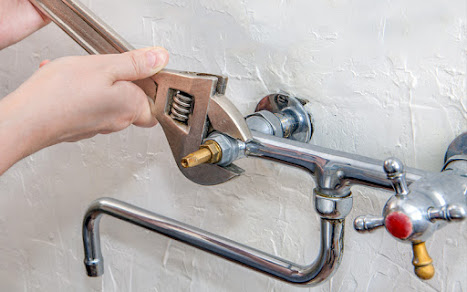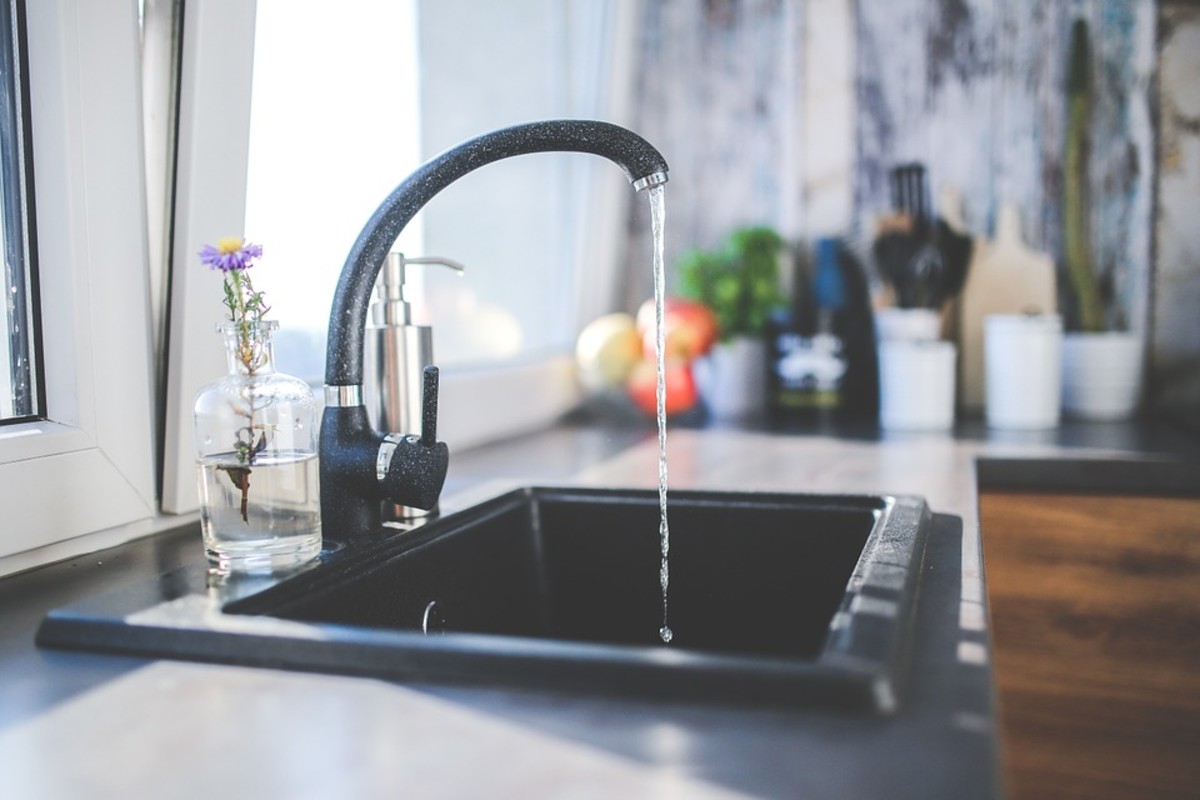Determining And Fixing Plumbing Sounds In Your House
Give Me A Quote!This great article below relating to Why Your Water Pipes Are Noisy and How To Shut Them Up is relatively attention-grabbing. Don't miss out on it.

To detect loud plumbing, it is essential to determine first whether the undesirable audios happen on the system's inlet side-in other words, when water is turned on-or on the drainpipe side. Noises on the inlet side have differed causes: excessive water pressure, used valve and tap components, incorrectly linked pumps or other devices, improperly put pipeline bolts, and plumbing runs containing too many tight bends or various other limitations. Noises on the drain side normally originate from inadequate place or, as with some inlet side sound, a design containing limited bends.
Hissing
Hissing noise that takes place when a faucet is opened slightly usually signals extreme water pressure. Consult your regional public utility if you believe this trouble; it will certainly have the ability to tell you the water stress in your area as well as can install a pressurereducing shutoff on the incoming water supply pipe if essential.
Thudding
Thudding noise, frequently accompanied by trembling pipelines, when a faucet or appliance valve is switched off is a condition called water hammer. The sound and resonance are caused by the resounding wave of pressure in the water, which instantly has no place to go. In some cases opening up a valve that releases water quickly right into a section of piping consisting of a restriction, elbow joint, or tee installation can produce the exact same problem.
Water hammer can usually be treated by mounting fittings called air chambers or shock absorbers in the plumbing to which the issue shutoffs or faucets are linked. These tools allow the shock wave produced by the halted circulation of water to dissipate in the air they consist of, which (unlike water) is compressible.
Older plumbing systems might have short vertical areas of capped pipe behind walls on faucet runs for the exact same objective; these can ultimately fill with water, decreasing or destroying their effectiveness. The remedy is to drain the water system entirely by shutting off the major water supply shutoff and opening all faucets. Then open up the main supply valve as well as close the taps one at a time, beginning with the faucet nearest the valve and ending with the one farthest away.
Chattering or Shrieking
Intense chattering or shrieking that occurs when a shutoff or tap is switched on, which generally goes away when the installation is opened completely, signals loosened or malfunctioning inner parts. The remedy is to replace the shutoff or faucet with a brand-new one.
Pumps and also appliances such as washing equipments and also dishwashers can transfer electric motor sound to pipes if they are incorrectly connected. Connect such things to plumbing with plastic or rubber hoses-never rigid pipe-to isolate them.
Other Inlet Side Noises
Squeaking, squealing, scratching, snapping, and tapping normally are brought on by the expansion or contraction of pipes, normally copper ones providing warm water. The audios occur as the pipes slide against loose fasteners or strike close-by home framework. You can commonly determine the place of the issue if the pipes are exposed; just adhere to the audio when the pipelines are making sounds. More than likely you will certainly discover a loosened pipe wall mount or an area where pipes exist so close to flooring joists or other mounting items that they clatter against them. Attaching foam pipe insulation around the pipes at the point of get in touch with ought to remedy the trouble. Make sure straps and wall mounts are safe and secure and also supply appropriate support. Where possible, pipe bolts need to be affixed to large architectural aspects such as foundation wall surfaces as opposed to to mounting; doing so reduces the transmission of vibrations from plumbing to surfaces that can intensify as well as move them. If connecting bolts to framework is inescapable, cover pipes with insulation or other resilient product where they call bolts, as well as sandwich the ends of new bolts in between rubber washing machines when installing them.
Fixing plumbing runs that struggle with flow-restricting limited or various bends is a last option that should be taken on only after consulting a skilled plumbing service provider. Regrettably, this situation is rather typical in older residences that might not have been developed with indoor plumbing or that have seen several remodels, specifically by novices.
Drain Sound
On the drain side of plumbing, the principal goals are to get rid of surfaces that can be struck by dropping or rushing water and also to insulate pipelines to contain inevitable sounds.
In brand-new construction, bath tubs, shower stalls, toilets, and wallmounted sinks and also basins must be set on or against durable underlayments to reduce the transmission of noise through them. Water-saving bathrooms and faucets are much less loud than traditional versions; install them rather than older kinds even if codes in your area still allow using older fixtures.
Drains that do not run vertically to the basement or that branch right into horizontal pipe runs sustained at flooring joists or other mounting existing especially frustrating noise issues. Such pipelines are large enough to emit considerable vibration; they likewise lug considerable quantities of water, that makes the situation worse. In new building, specify cast-iron dirt pipes (the large pipes that drain pipes commodes) if you can afford them. Their enormity has much of the noise made by water going through them. Additionally, stay clear of routing drainpipes in wall surfaces shown to rooms and spaces where people collect. Wall surfaces consisting of drains need to be soundproofed as was described earlier, utilizing dual panels of sound-insulating fiber board and also wallboard. Pipes themselves can be wrapped with special fiberglass insulation produced the objective; such pipelines have an impervious vinyl skin (in some cases consisting of lead). Outcomes are not constantly satisfactory.
3 Most Common Reasons for Noisy Water Pipes
Water hammer
When water is running and is then suddenly turned off, the rushing liquid has no place to go and slams against the shut-off valve. The loud, thudding sound that follows is known as a water hammer. Besides being alarming, water hammer can potentially damage joints and connections in the water pipe itself. There are two primary methods of addressing this issue.
Check your air chamber. An air chamber is essentially a vertical pipe located near your faucet, often in the wall cavity that holds the plumbing connected to your sink or tub. The chamber is filled with air that compresses and absorbs the shock of the fast moving water when it suddenly stops. Unfortunately, over time air chambers tend to fill with water and lose their effectiveness. To replenish the air chambers in your house you can do the following. Turn off the water supply to your house at the main supply (or street level). Open your faucets to drain all of the water from your plumbing system. Turn the water back on. The incoming water will flush the air out of the pipes but not out of the vertical air chamber, where the air supply has been restored. Copper pipes
Copper pipes tend to expand as hot water passes through and transfers some of its heat to them. (Copper is both malleable and ductile.) In tight quarters, copper hot-water lines can expand and then noisily rub against your home's hidden structural features — studs, joists, support brackets, etc. — as it contracts.
One possible solution to this problem is to slightly lower the temperature setting on your hot water heater. In all but the most extreme cases, expanding and contracting copper pipes will not spring a leak. Unless you’re remodeling, there's no reason to remove sheetrock and insert foam padding around your copper pipes.
Water pressure that’s too high
If your water pressure is too high, it can also cause noisy water pipes. Worse, high water pressure can damage water-supplied appliances, such as your washing machine and dishwasher.
Most modern homes are equipped with a pressure regulator that's mounted where the water supply enters the house. If your home lacks a regulator, consider having one professionally installed. Finally, remember that most plumbers recommend that water is delivered throughout your home at no lower than 40 and no greater than 80 psi (pounds per square inch).
Whatever the state of your plumbing, one thing is certain — you’re eventually going to encounter repair and replacement issues around your home that require professional help. That’s where American Home Shield can come to your aid.
https://www.ahs.com/home-matters/repair-maintenance/causes-of-noisy-water-pipes/

Hopefully you liked our topic about Why Your Water Pipes Are Noisy and How To Shut Them Up. Many thanks for taking a few minutes to read through our short article. Sharing is nice. One never knows, you may be doing someone a favor. Thanks a lot for your time. Don't hesitate to check our site back soon.
Click On This Link